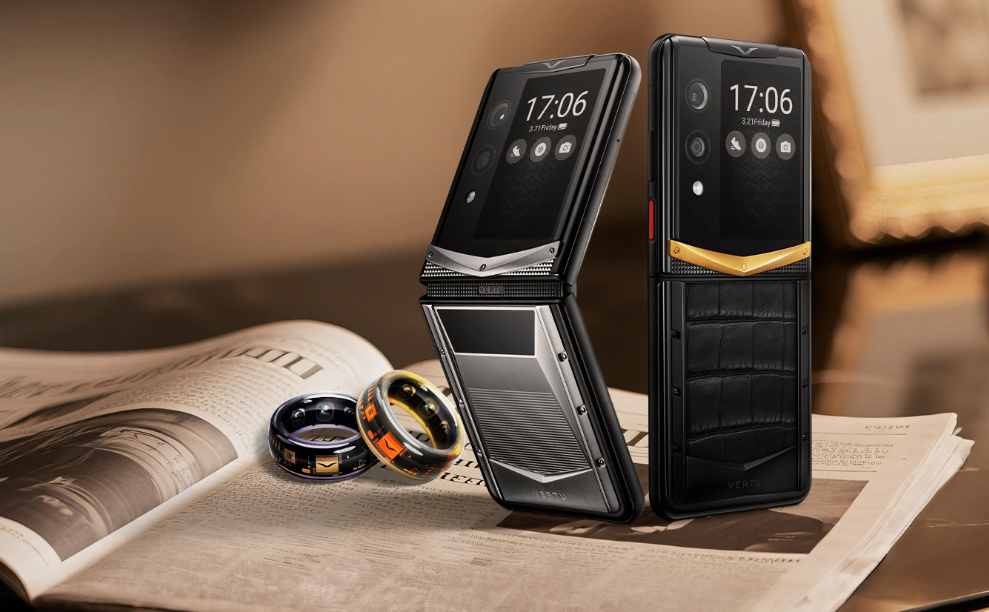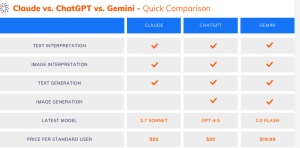
The Hook & Summary
Finding a great Android smartphone without breaking the bank feels like a constant challenge. You want cutting-edge features, but your wallet says otherwise.
What You'll Learn:
- How to identify your smartphone needs for the best value.
- The top Android phones under $500 for 2025, focusing on camera, performance, and all-around excellence.
- Key specifications explained to make informed buying decisions.
- Strategies for maximizing battery life and ensuring software longevity.
Understanding Your Needs: What Matters Most in a Sub-$500 Android Smartphone
Navigating the world of Android smartphones under $500 requires a clear understanding of what you truly need. The market is flooded with options, each promising a unique blend of features. Before diving into specific models, it's crucial to define your usage patterns and understand the jargon.
Defining Your Usage: From Casual Browsing to Photography
Your daily smartphone activities will heavily influence which device is the best fit.
- Casual User: If your primary use involves social media, web browsing, email, and occasional calls, you can prioritize battery life and a decent display. High-end processors and pro-level cameras might be overkill.
- Multimedia Enthusiast: For those who stream videos, play casual games, and consume a lot of content, a good display with decent resolution and a capable processor for smooth multitasking are key. Speaker quality can also be a factor.
- Photography Buff: If capturing high-quality photos and videos is your priority, camera performance becomes paramount. Look for phones with advanced camera sensors, computational photography features, and good low-light capabilities. You might need to balance this with other features, as top-tier cameras often push prices higher.
- Power User/Gamer: Demanding tasks like intense gaming, video editing, or running multiple heavy apps require a robust processor, ample RAM, and a smooth, high-refresh-rate display. Battery life is also critical here.
Key Android Smartphone Terminology Explained
Understanding these terms will empower you to make informed choices:
- SoC (System on a Chip): This is the brain of your phone, integrating the CPU, GPU, and other essential components. A more powerful SoC means faster performance.
- RAM (Random Access Memory): This is your phone's short-term memory. More RAM allows for smoother multitasking and quicker app switching.
- Storage (ROM): This is where your apps, photos, and files are stored. Generally, more storage is better, but check for expandable storage options via microSD cards.
- Refresh Rate (Hz): This measures how many times per second the display updates its image. Higher refresh rates (e.g., 90Hz, 120Hz) result in smoother scrolling and animations.
- NFC (Near Field Communication): Enables contactless payments and quick data sharing between devices.
- IP Rating: Indicates a device's resistance to dust and water. For example, IP68 means it's dust-tight and can be submerged in water up to 1.5 meters for 30 minutes.
Balancing Features: Performance, Camera, and Battery in 2025
In the sub-$500 segment for 2025, achieving a perfect balance is the holy grail. Manufacturers often make trade-offs.
“For budget-conscious consumers, the sweet spot lies in identifying which features are non-negotiable. A slightly older flagship processor can offer more raw power than a brand new mid-range one, for instance.”
You'll typically find that phones excelling in one area might compromise slightly in another. For example, a phenomenal camera might come with a less powerful processor, or a gaming-focused device might have a more basic camera setup. The goal is to find the best compromise that aligns with your primary needs.
Top 2025 Android Smartphone Value Picks Under $500: Our Top Selections
The sub-$500 Android market in 2025 is incredibly competitive, offering fantastic devices that punch well above their weight. Here are our top picks, categorized by their strengths.
The Camera Champions: Pixel A-Series and Competitors
Google's Pixel “a” series has consistently set the bar for camera performance in the mid-range segment. Leveraging Google's exceptional computational photography, these phones can produce stunning images that rival much more expensive devices.
- Google Pixel 8a (or its successor): Expect excellent image processing, vibrant colors, and impressive low-light performance. Its software experience is also a major draw. You can find more about Google's camera technology on their official Google AI blog.
- Samsung Galaxy A Series (e.g., A55): Samsung often packs capable camera hardware into its mid-range A series. While they might not always match Pixel's computational magic, they offer versatility with multiple lenses and good overall image quality for everyday use.
- Other Contenders: Keep an eye on brands like Motorola and OnePlus for their mid-range offerings, which sometimes surprise with strong camera capabilities.
Performance Powerhouses: OnePlus Nord and Alternatives
If speed, smooth multitasking, and gaming are your top priorities, look for devices that prioritize processing power and RAM.
- OnePlus Nord Series (e.g., Nord 4/5): OnePlus has a reputation for delivering smooth performance and clean software at competitive prices. Their Nord line often features capable processors and high refresh rate displays, making them excellent for gaming and general use. OnePlus's commitment to software optimization is well-documented on their developer resources page.
- Xiaomi/Redmi/POCO: These brands are notorious for offering high performance-to-price ratios. You can often find devices with flagship-level processors or very capable mid-range chipsets at aggressive price points.
- Motorola Moto G Series: Motorola's Moto G line frequently offers clean Android experiences and solid performance for the price, making them a good choice for those who value a bloatware-free experience.
All-Around Excellers: Samsung's Mid-Range Offerings
Samsung's Galaxy A series often strikes an excellent balance between display quality, camera performance, battery life, and user experience. They are typically well-rounded devices that cater to a broad audience.
- Samsung Galaxy A55 (or similar): These devices usually feature vibrant AMOLED displays, capable camera systems for most users, good battery life, and Samsung's feature-rich One UI software. They also benefit from Samsung's strong commitment to software updates.
- Samsung Galaxy A35 (or similar): A more budget-friendly option that still offers a compelling package, often excelling in display and battery life.
Here's a quick comparison of some potential contenders:
| Feature | Google Pixel 8a (Expected) | Samsung Galaxy A55 | OnePlus Nord (Expected) |
|---|---|---|---|
| Primary Focus | Camera, Software | All-around | Performance, Display |
| Processor | Tensor G3 (or successor) | Exynos 1480 (or similar) | Snapdragon 7 Gen 3 (or similar) |
| Display | OLED, 120Hz | AMOLED, 120Hz | AMOLED, 120Hz |
| Camera | Excellent computational | Very Good | Good |
| Battery | Good | Excellent | Good |
| Price Range | $499 | $400 – $450 | $350 – $450 |
Decoding Specs: What ‘Under the Hood' Really Means for Your 2025 Android Experience
Understanding smartphone specifications can feel like deciphering a foreign language, but a little knowledge goes a long way in choosing the right device.
Processor Power: How Chipsets Affect Speed and Efficiency
The processor, or SoC, is the heartbeat of your smartphone. It dictates how quickly apps launch, how smoothly games run, and how efficiently your phone conserves battery. For 2025, you'll see a mix of Qualcomm's Snapdragon, MediaTek's Dimensity, and Samsung's Exynos chipsets in the sub-$500 range.
- High-End Mid-Range: Chips like the Snapdragon 7 Gen 3 or Dimensity 8300-Ultra offer performance close to last year's flagships, ensuring a fluid experience for most tasks.
- Budget-Friendly: Processors like the Snapdragon 6 Gen 1 or Dimensity 700 are perfectly capable for everyday use but may struggle with graphically intensive games or heavy multitasking.
“When comparing chipsets, look beyond just the name. Clock speeds, core configurations, and manufacturing processes all play a role in overall performance and power efficiency. Resources like AnTuTu Benchmark scores can offer a comparative glimpse.”
RAM and Storage: Ensuring Smooth Multitasking and Space
- RAM: For 2025, aim for at least 6GB of RAM for a smooth experience with daily apps. 8GB or more will provide a noticeable improvement for heavy multitasking and gaming.
- Storage:
128GB of internal storage is becoming the standard minimum. If you take a lot of photos, videos, or download large apps and games, consider opting for 256GB or ensuring the phone has a microSD card slot for expansion.
Display Refresh Rates: The Secret to a Smoother Screen
A higher refresh rate makes the phone feel significantly more responsive.
- 60Hz: Standard for older or very budget devices.
- 90Hz: A noticeable improvement over 60Hz, offering smoother scrolling and animations.
- 120Hz: The current sweet spot for mid-range phones, providing a remarkably fluid visual experience.
While higher refresh rates consume more battery, many phones offer adaptive refresh rates to conserve power when not needed.
Battery Life and Charging: Staying Powered Through 2025
No one wants to be tethered to a charger. In 2025, battery life and charging speeds remain crucial considerations for sub-$500 Android smartphones.
mAh Matters: Understanding Battery Capacity
Battery capacity is measured in milliampere-hours (mAh). A higher mAh number generally means a larger battery and potentially longer usage time.
- 4500 mAh to 5000 mAh: This range is common for mid-range devices and typically offers all-day battery life for moderate users.
- Above 5000 mAh: These devices often provide two-day battery life or more, ideal for heavy users or those who can't charge frequently.
However, software optimization and processor efficiency play a significant role alongside raw mAh. A phone with a 4500 mAh battery and an efficient chipset might outperform a 5000 mAh phone with a power-hungry processor.
Fast Charging Facts: Getting Back to Full Speed
Fast charging technology allows you to replenish your battery significantly faster. Look for phones supporting:
- 18W to 30W Fast Charging: Common in this price range, offering a decent speed boost.
- 45W to 67W Fast Charging: Increasingly found in higher-end mid-range devices, providing very rapid charging times.
“The charging speed is often advertised in Watts (W). A higher wattage generally means faster charging, but it's also dependent on the charger itself. Always check if a fast charger is included in the box.”
Tips for Maximizing Your Android Smartphone's Battery Life
- Reduce Screen Brightness: The display is a major power drain.
- Limit Background App Activity: Restrict apps that don't need to run constantly.
- Disable Unused Connectivity: Turn off Wi-Fi, Bluetooth, and GPS when not in use.
- Utilize Battery Saver Modes: Most Android phones have built-in modes to extend battery life.
- Keep Software Updated: Updates often include battery optimization improvements. You can learn more about general battery optimization techniques on sites like Android Authority's battery guide.
Software Updates and Longevity: Getting the Most from Your 2025 Purchase
The software experience and the promise of future updates are critical for the long-term value and security of your Android smartphone.
The Importance of Android Updates and Security Patches
Software updates bring new features, performance enhancements, and, most importantly, security patches to protect your device from vulnerabilities. Staying updated is crucial for maintaining your privacy and data security. The Android security bulletin is regularly updated by Google, highlighting potential risks: Android Security Bulletins.
Manufacturer Update Policies: What to Expect
Different manufacturers have varying commitments to software support. For sub-$500 phones in 2025:
- Google: Pixel phones typically receive the longest and most consistent update support, often including several years of OS updates and security patches.
- Samsung: Samsung has significantly improved its update policy, offering multiple years of OS and security updates for its A-series devices.
- OnePlus: Generally offers good update support, though it can vary between Nord models.
- Xiaomi/Redmi/POCO: Update policies can be less predictable, with some devices receiving good support and others less so. It's wise to research specific models.
- Motorola: Often provides at least one major OS update and regular security patches, with some higher-end Moto G models receiving more.
“When considering a purchase, look for manufacturers that explicitly state their update commitment. A phone that receives regular updates will remain more secure and functional for longer.”
Maximizing Your Phone's Lifespan Beyond 2025
Beyond software updates, a few practices can extend the life of your device:
- Use a Screen Protector and Case: Physical protection is essential to prevent damage from drops and scratches.
- Avoid Extreme Temperatures: Prolonged exposure to heat or cold can degrade battery health and other components.
- Manage Storage: Don't let your storage fill up completely, as this can slow down performance.
- Consider a Factory Reset: If your phone starts to feel sluggish after a couple of years, a factory reset can often breathe new life into it. You can find guides on performing a factory reset on Android's official support page.
FAQ (Frequently Asked Questions)
Q: How much RAM do I really need in a sub-$500 Android phone for 2025?
A: For most users in 2025, 6GB of RAM will provide a smooth experience for everyday tasks like social media, browsing, and light gaming. If you frequently multitask with many apps open or play demanding games, aim for 8GB of RAM or more for a noticeably better and more future-proof experience.
Q: Are phones with higher refresh rates worth the extra cost under $500?
A: Generally, yes. A 90Hz or 120Hz display makes a significant difference in perceived smoothness for scrolling, animations, and gaming. While it can consume slightly more battery, many phones offer adaptive refresh rates that balance performance and power efficiency, making it a worthwhile upgrade for a more premium feel.
Q: Which brand offers the best camera quality in the sub-$500 segment?
A: Historically, Google's Pixel ‘a series has been the leader in computational photography, delivering excellent image quality that often rivals more expensive phones. However, Samsung's Galaxy A series and some offerings from Motorola and OnePlus also provide very capable cameras that are more than sufficient for most users' needs.
Q: How do I know if a phone will receive Android OS updates for a few years?
A: Look for manufacturers that publicly state their update commitment. Google and Samsung are typically the most reliable in this regard, often promising 3-4 years of OS updates and 4-5 years of security patches for their mid-range devices. Researching the specific model's update history and manufacturer policy is recommended.
Q: Is it better to get a phone with a slightly older flagship processor or a newer mid-range processor under $500?
A: This depends on your priorities. A slightly older flagship processor might offer more raw power and better gaming performance, while a newer mid-range processor might be more power-efficient and have better AI capabilities. For general use, newer mid-range chips are often optimized for better efficiency. For demanding tasks, an older flagship might still hold its own.
Conclusion
The 2025 landscape for Android smartphones under $500 offers incredible value, proving that you don't need to spend a fortune to get a great device. By understanding your personal needs, deciphering specifications, and considering factors like camera prowess, processing power, battery longevity, and software support, you can confidently choose a phone that excels in the areas that matter most to you.
Ready to upgrade? Explore the top picks mentioned and find the perfect Android companion for your budget! Share your favorite sub-$500 Android phone in the comments below.







